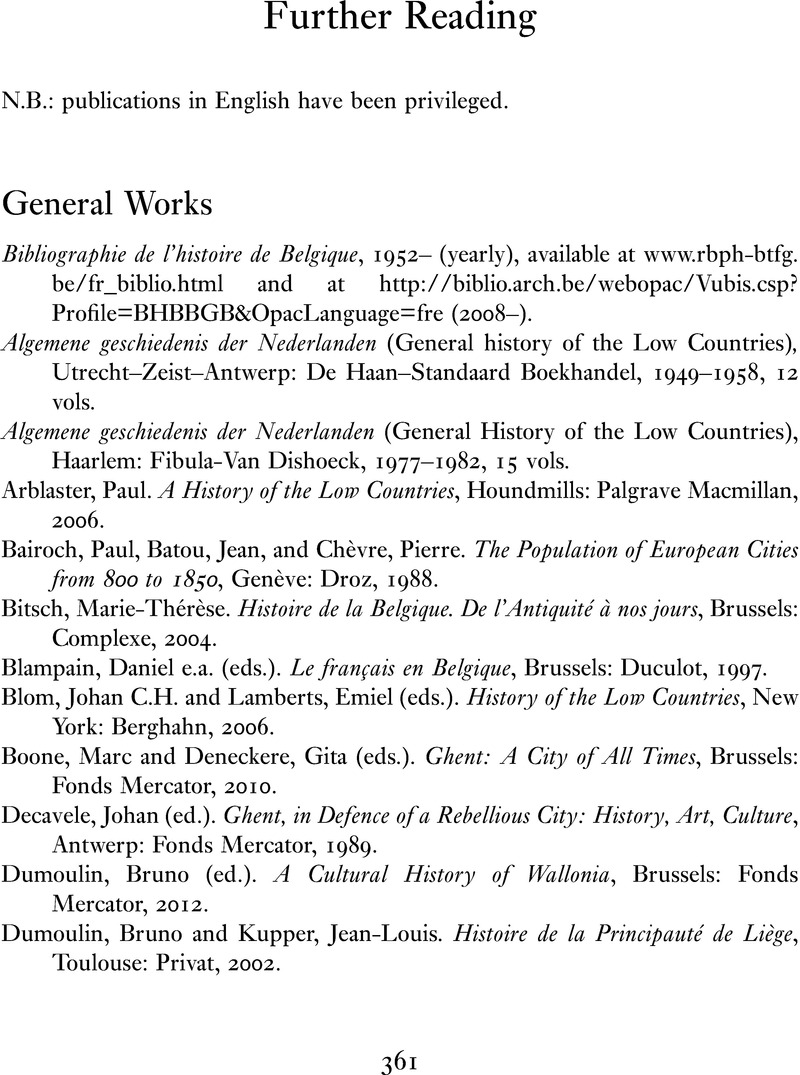Book contents
- A Concise History of Belgium
- Cambridge Concise Histories
- A Concise History of Belgium
- Copyright page
- Dedication
- Contents
- Figures
- Maps
- Acknowledgments
- Note on the Text
- Introduction
- 1 Earliest Times
- 2 The Era of the Frankish Kingdoms
- 3 The Origins of the Medieval Principalities
- 4 Unifying the Netherlands: The Burgundy–Habsburg Period (1384–1555)
- 5 The Spanish Netherlands (1555–1700/1713)
- 6 The Austrian Netherlands (c.1700–1780)
- 7 The Formation of a New Nation-State (1780s–1830)
- 8 The Consolidation of a Bourgeois Regime (1831–1880s)
- 9 The Belgian Nation-State at Its Height (1880s–1945)
- 10 The Metamorphoses of a Nation-State (from 1945 to the Present Day)
- General Conclusion
- Appendix: List of Rulers, Sovereigns and Heads of State (1419–Present) and of Governors General (1507–1794) of the Southern Low Countries and Belgium
- Further Reading
- Index
- References
Further Reading
Published online by Cambridge University Press: 16 March 2023
- A Concise History of Belgium
- Cambridge Concise Histories
- A Concise History of Belgium
- Copyright page
- Dedication
- Contents
- Figures
- Maps
- Acknowledgments
- Note on the Text
- Introduction
- 1 Earliest Times
- 2 The Era of the Frankish Kingdoms
- 3 The Origins of the Medieval Principalities
- 4 Unifying the Netherlands: The Burgundy–Habsburg Period (1384–1555)
- 5 The Spanish Netherlands (1555–1700/1713)
- 6 The Austrian Netherlands (c.1700–1780)
- 7 The Formation of a New Nation-State (1780s–1830)
- 8 The Consolidation of a Bourgeois Regime (1831–1880s)
- 9 The Belgian Nation-State at Its Height (1880s–1945)
- 10 The Metamorphoses of a Nation-State (from 1945 to the Present Day)
- General Conclusion
- Appendix: List of Rulers, Sovereigns and Heads of State (1419–Present) and of Governors General (1507–1794) of the Southern Low Countries and Belgium
- Further Reading
- Index
- References
Summary

- Type
- Chapter
- Information
- A Concise History of Belgium , pp. 361 - 369Publisher: Cambridge University PressPrint publication year: 2023



